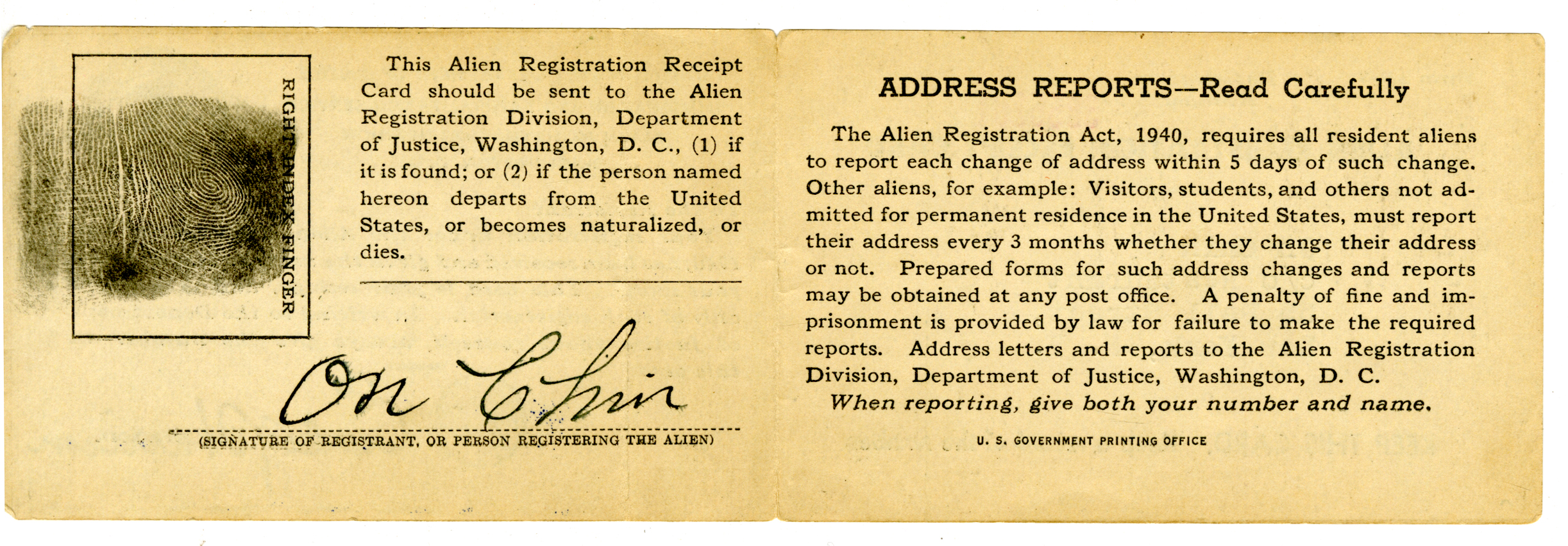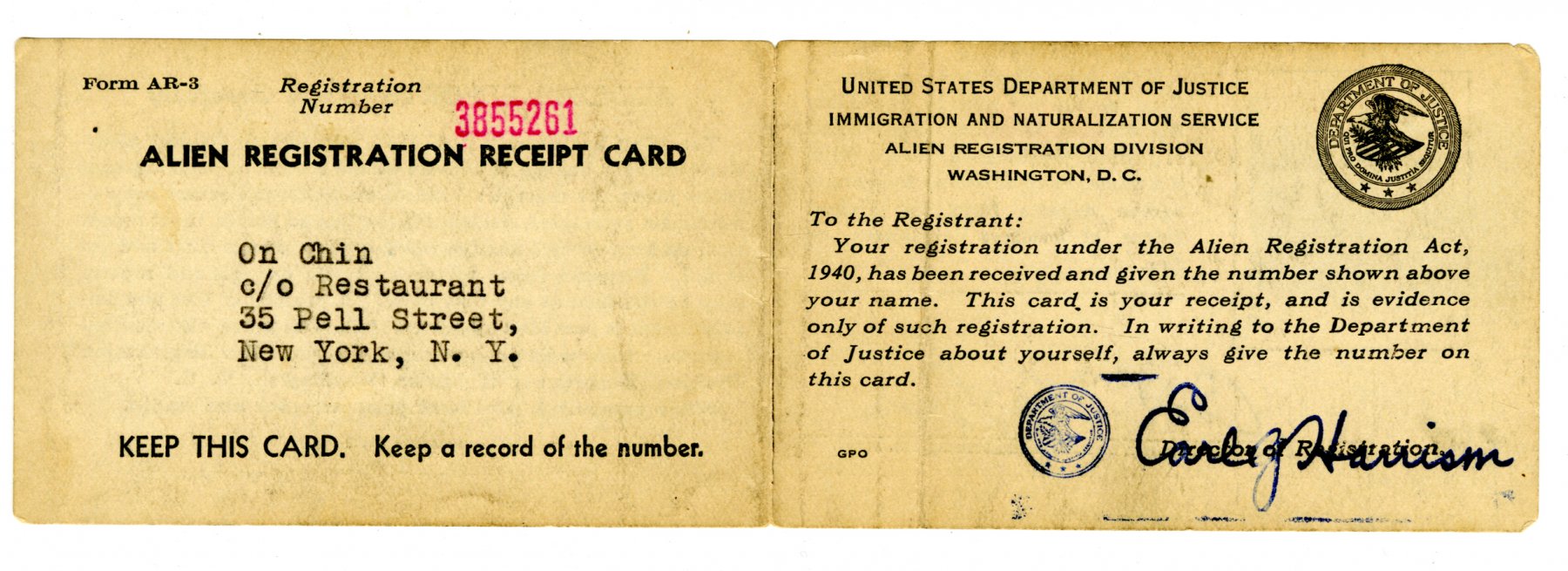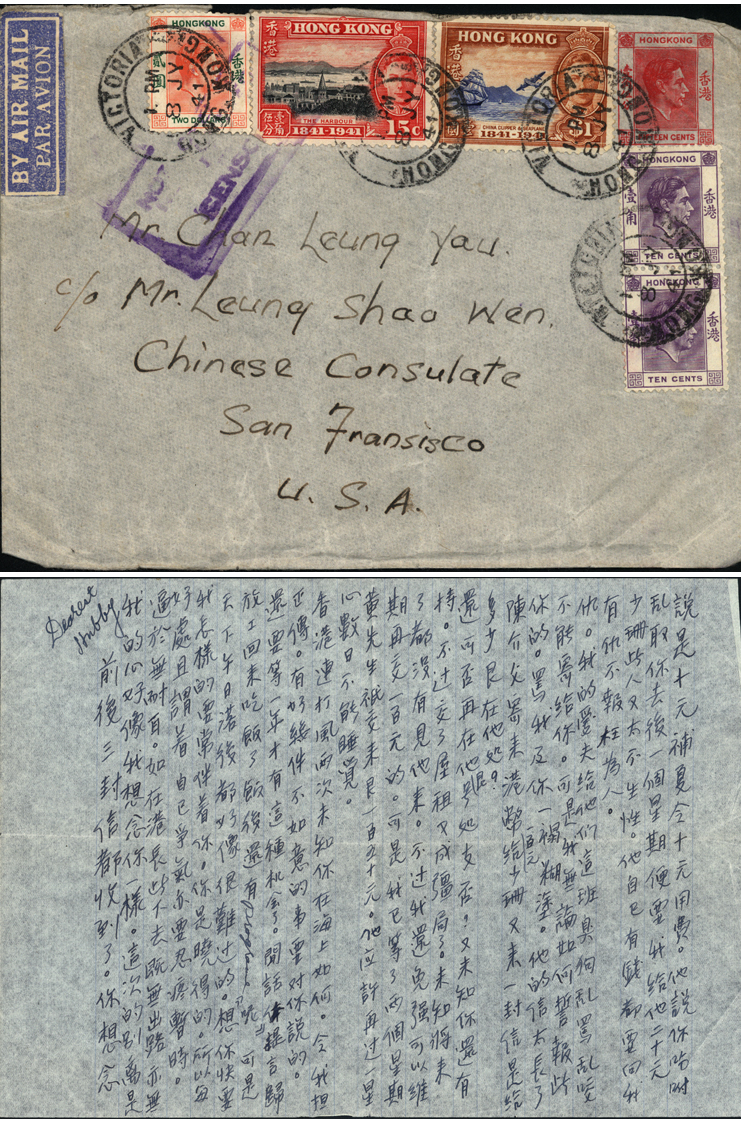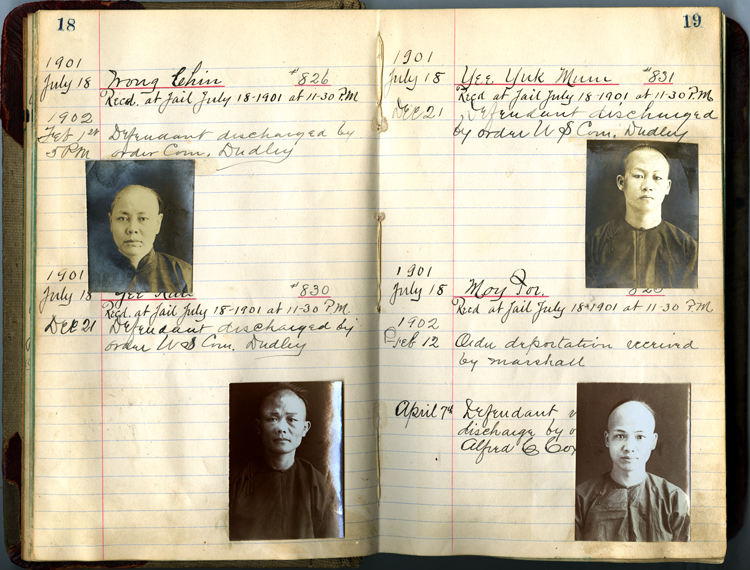
On Chin’s Alien Registration Receipt Card, courtesy of Lung Chin, Museum of Chinese in America (MOCA) Collection.
On Chin的外国人登记卡,Lung Chin捐赠,美国华人博物馆(MOCA)馆藏
While the Chinese Exclusion Act of 1882 was the first law to bar an immigrant group solely on the basis of nationality, related acts passed over the next several decades served to tighten exclusionary laws against Chinese. The Alien Registration Act of 1940, popularly known as the Smith Act, required that all resident aliens in the U.S. be registered and fingerprinted and that they carry their card with them at all times. The Smith Act was enacted in response to the growing fears of fascism and communism, as well as the labor movement being led by the immigrant workers. But registration cards like this harken back to the Geary Act of 1892, which not only renewed the Chinese Exclusion Act but required Chinese to carry documentation at all times. This alien registration card belonged to On Chin – the front of his card bears his name and address while the back bears his signature and right index fingerprint.


